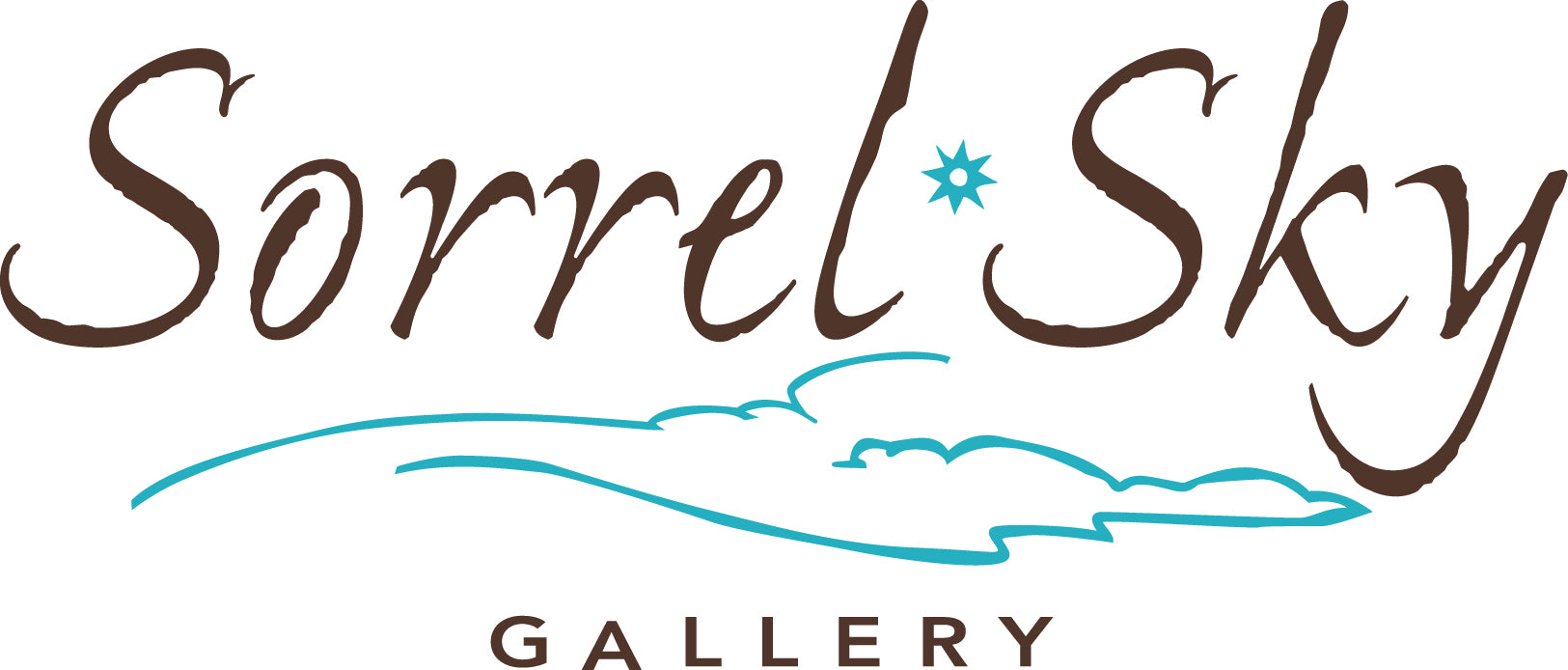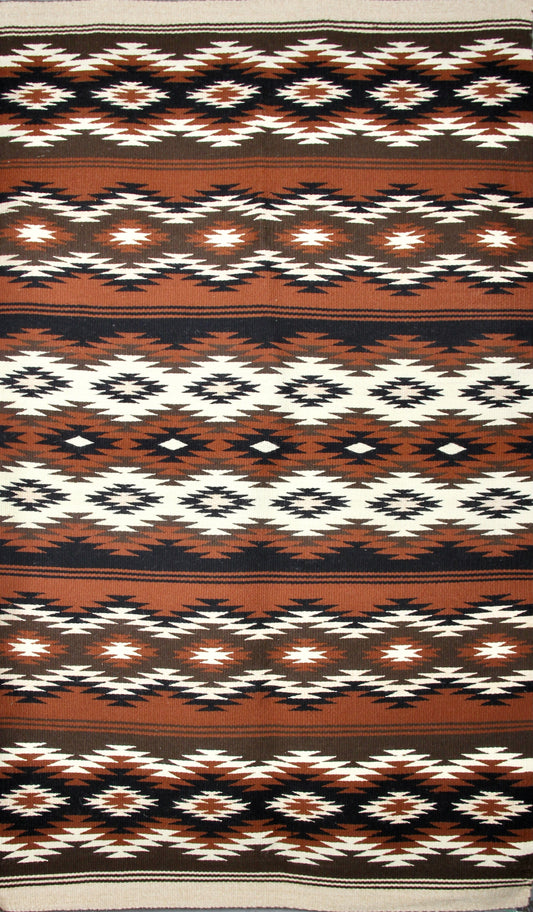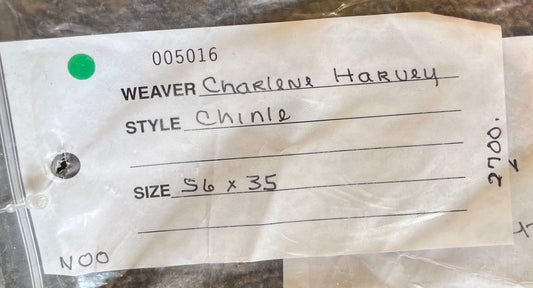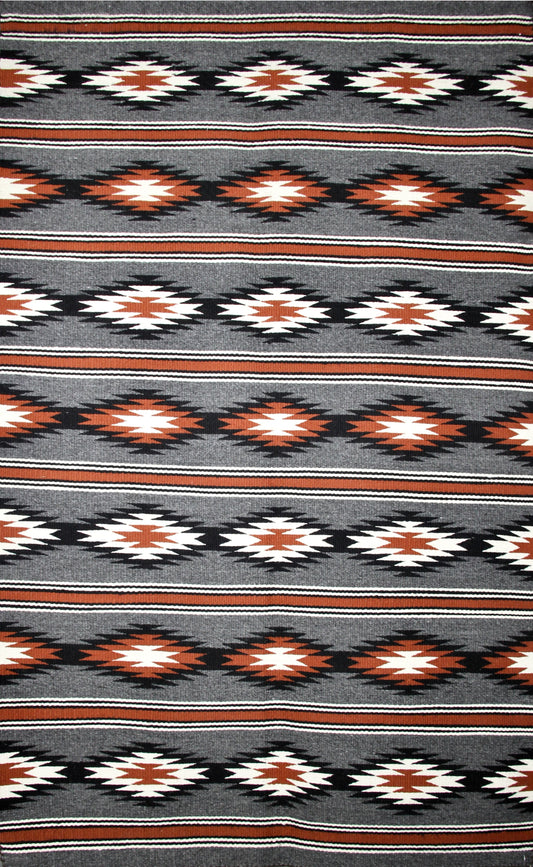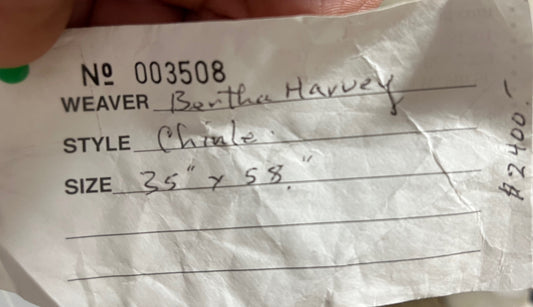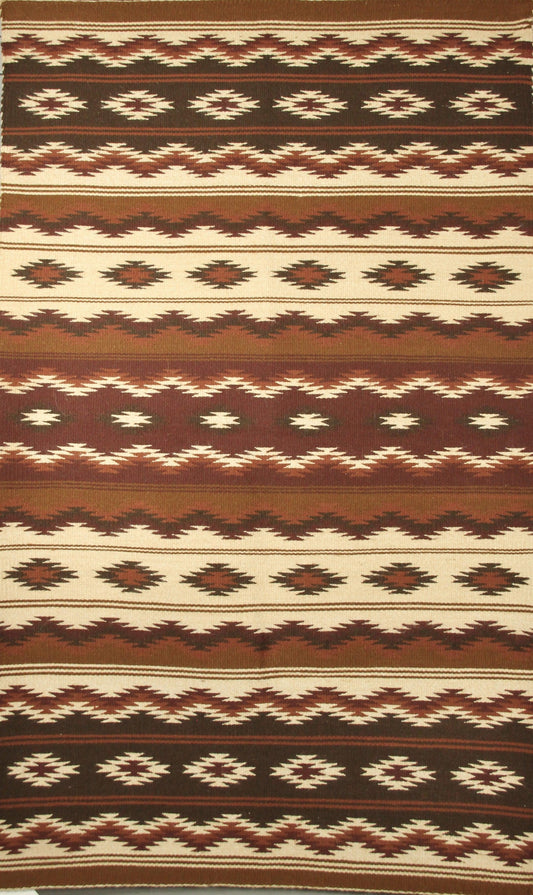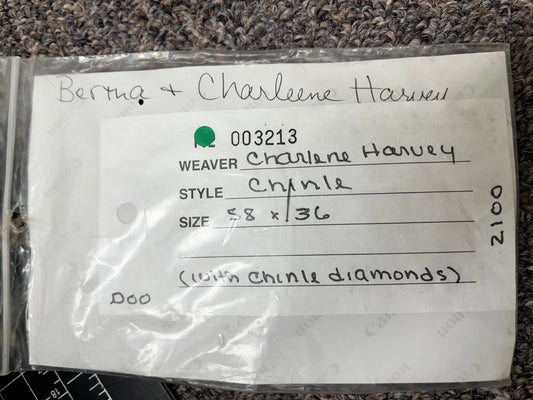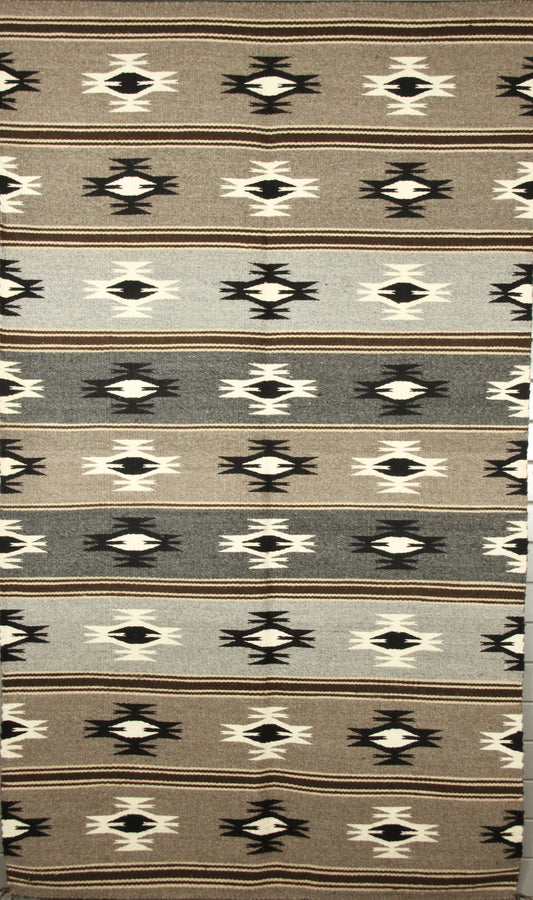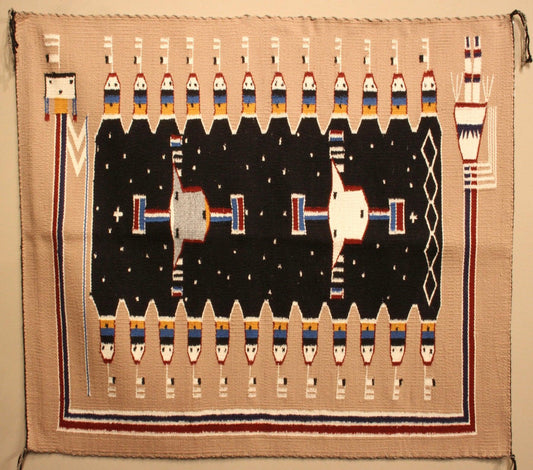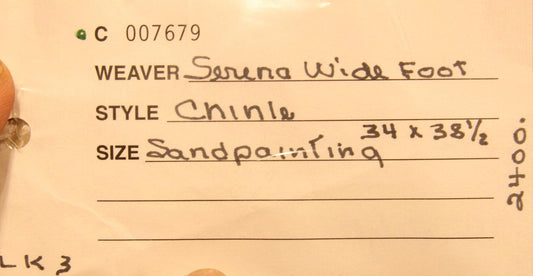Collection: Chinle Area Weavings
-
Vendor:Navajo Weaving
Chinle 35" x 56"
Regular price $ 2,700.00Regular priceUnit price per -
Vendor:Navajo Weaving
Chinle 35" x 58"
Regular price $ 2,400.00Regular priceUnit price per -
Vendor:Navajo Weaving
Chinle 36" x 58" - 3213
Regular price $ 2,100.00Regular priceUnit price per -
Vendor:Navajo Weaving
Chinle 36" x 58" - 3922
Regular price $ 2,100.00Regular priceUnit price per -
Vendor:Navajo Weaving
Chinle Weaving 34" x 38" - C007679
Regular price $ 2,400.00Regular priceUnit price per
No More Products
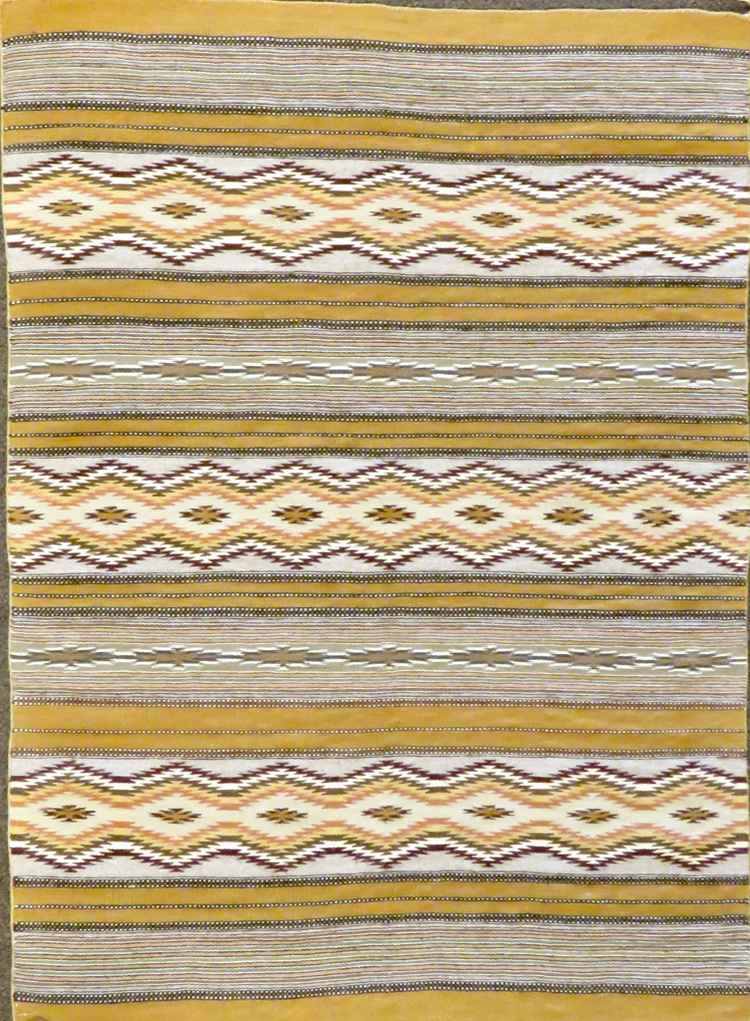
The Chinle style, developed at the mouth of Canyon de Chelly, was the inspiration of trader Cozy McSparron, his wife Inja and Boston scholar Mary Cabot Wheelwright. Wheelwright, who went on to establish the Wheelwright Museum of Navajo Ceremonial Art in Santa Fe, helped provide the funds and encouragement to support weavers who were, for the first time, working exclusively with vegetal dyes. McSparron was a major influence on Sallie and Bill Lippincott at Wide Ruins.
Two young anthropology graduates from the University of Chicago spent the summer of 1938 as Park Rangers at Canyon de Chelly. They were befriended by Cozy and Inja McSparron, traders from Chinle, Arizona. At the end of the summer, they decided that they loved the Navajo country and the people but didn’t like working for the government. McSparron convinced them to buy a trading post and they did, purchasing the Wide Ruins post,18 miles north of Chambers, AZ. There they worked with weavers and developed a unique style of banded rugs colored with vegetal dyes.
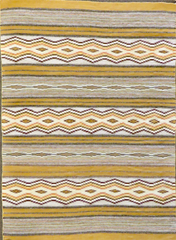
The Chinle style, developed at the mouth of Canyon de Chelly, was the inspiration of trader Cozy McSparron, his wife Inja and Boston scholar Mary Cabot Wheelwright. Wheelwright, who went on to establish the Wheelwright Museum of Navajo Ceremonial Art in Santa Fe, helped provide the funds and encouragement to support weavers who were, for the first time, working exclusively with vegetal dyes. McSparron was a major influence on Sallie and Bill Lippincott at Wide Ruins.
Two young anthropology graduates from the University of Chicago spent the summer of 1938 as Park Rangers at Canyon de Chelly. They were befriended by Cozy and Inja McSparron, traders from Chinle, Arizona. At the end of the summer, they decided that they loved the Navajo country and the people but didn’t like working for the government. McSparron convinced them to buy a trading post and they did, purchasing the Wide Ruins post,18 miles north of Chambers, AZ. There they worked with weavers and developed a unique style of banded rugs colored with vegetal dyes.
